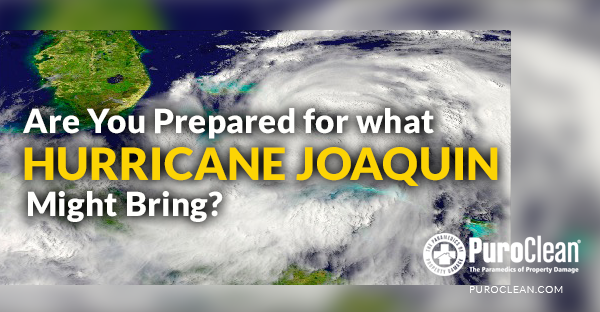 Now that Hurricane Joaquin is threatening the east coast of the United States, it is important to keep in mind that the best way to combat is storm preparedness. If predictions from the National Oceanic and Atmospheric Administration (NOAA) are on target, there will be flooding and damage caused by this storm.
Now that Hurricane Joaquin is threatening the east coast of the United States, it is important to keep in mind that the best way to combat is storm preparedness. If predictions from the National Oceanic and Atmospheric Administration (NOAA) are on target, there will be flooding and damage caused by this storm.
This storm is threatening with historic rainfall and potential flooding for Georgia, the Carolinas and Virginia this weekend.
Different forecast models predict Joaquin will either veer northwestward, ramming into Virginia, Maryland or North Carolina this weekend, or avoid the East Coast entirely as it takes a more easterly track up the Atlantic. Overnight, the American model trended toward the European model in predicting that the storm would not make landfall in the U.S.
Regardless of Joaquin’s path, Georgia, the Carolinas and Virginia appeared in line to be soaked by a separate storm pulling tropical air into the region. Between 10 and 15 inches of rain has been forecast over a 72-hour period from Friday through Sunday — with as much as 20 inches in some places. Parts of Maryland, Delaware and New Jersey are also expected to be drenched this weekend.
With that in mind, here’s a look at the best way to properly prepare for hurricane Joaquin. It’s an old cliché, but it’s better to be safe than sorry.
Before the Storm
• Build an emergency kit: According to FEMA, you should have enough food, water and supplies (flashlight, extra batteries, and perhaps even a deck of cards for entertainment purposes) to survive for 72 hours on-hand in case of emergency. Remember, you could be without power for days and your travel could be restricted by floodwaters and/or debris – so plan your kit accordingly.
• Know your property: If rainfall or tides become extreme, is it safe to wait things out on your property? That’s what you should be asking yourself before the storm, as high winds aren’t the only threat from tropical storms or hurricanes. Storm surges and storm tides can also cause the water levels to rise and damage coastal areas. Know evacuation routes and where to go for shelter in case you need it.
• Secure your property: Hurricane-force winds are those that are 74 mph or greater. Without the right protection, these winds can be very punishing to your property. According to FEMA, permanent storm shutters are the best way to keep your windows safe. However, for homes that don’t have these shutters, 5/8-inch marine plywood is the next best option. Make sure you have such supplies on hand for boarding up your windows well ahead of hurricane season, so you won’t be scrambling and fighting the crowds for the plywood after a watch or warning is issued.
• Other preventative protective measures to consider are reinforcements to more securely attach your roof to your home’s frame and make sure your gutters and downspouts are unclogged to prevent water buildup near your property. The latter should be something you do at least twice a year to minimize buildup. An equally important tune-up is to reinforce or secure your garage door. If tropical storm or hurricane wind gusts enter your garage, the squalls have the potential to rip the door right off, not to mention inflict further damage on the roof.
Even after taking all the preventative measures in anticipation of an active hurricane season, your property may still not be immune from all the effects of a tropical storm or hurricane. That’s where your local PuroClean office can help in restoring your property to a pre-loss condition. The Paramedics of Property Damage are standing by to mitigate, restore and return your property to its pre-loss state as soon as possible. Contact your local PuroClean office today to learn about its disaster restoration services, as well as water, fire, smoke, mold and bio-recovery services that it offers.



 PuroClean of Alexandria
PuroClean of Alexandria